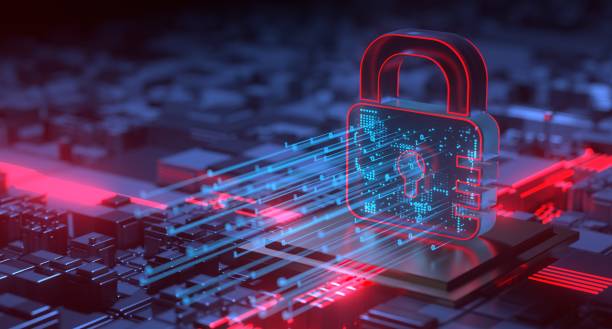
Introduction
In an era defined by rapid technological advancement and pervasive digital connectivity, cybersecurity has become a critical concern for individuals, businesses, and governments alike. The digital age has brought with it unprecedented convenience and opportunities, but it has also introduced a host of new threats and vulnerabilities. From sophisticated cyberattacks to data breaches, the landscape of cybersecurity is constantly evolving, presenting challenges for those seeking to protect their digital assets. This essay explores the current state of cybersecurity, the emerging threats in the digital age, and effective strategies for safeguarding against these risks.
The Evolving Cyber Threat Landscape
Understanding Cyber Threats
Cyber threats are malicious activities aimed at compromising the security, integrity, or availability of digital systems and data. These threats can come in various forms, including:
- Malware: Malicious software designed to damage or disrupt systems. Examples include viruses, worms, ransomware, and spyware.
- Phishing: Fraudulent attempts to obtain sensitive information, such as passwords or credit card details, by disguising oneself as a trustworthy entity.
- DDoS Attacks: Distributed Denial of Service attacks that overwhelm a system or network with excessive traffic, causing it to become unavailable.
- Data Breaches: Unauthorized access to sensitive data, often resulting in the exposure or theft of personal or financial information.
- Social Engineering: Manipulative tactics used to deceive individuals into divulging confidential information or performing actions that compromise security.
Emerging Threats in 2024
As technology continues to advance, new and more sophisticated threats are emerging:
- Advanced Persistent Threats (APTs): APTs are prolonged and targeted cyberattacks carried out by highly skilled and organized attackers. These threats often involve stealthy infiltration and data exfiltration over extended periods.
- Ransomware Evolution: Ransomware attacks have become increasingly targeted and sophisticated, with attackers using advanced encryption techniques and demanding higher ransoms. The rise of Ransomware-as-a-Service (RaaS) has also made it easier for less technically skilled criminals to launch attacks.
- IoT Vulnerabilities: The proliferation of Internet of Things (IoT) devices introduces new security challenges, as many of these devices lack robust security measures and can be exploited for attacks.
- Artificial Intelligence (AI) in Cyberattacks: AI and machine learning are being used by cybercriminals to enhance the effectiveness of attacks, automate phishing campaigns, and identify vulnerabilities.
- Supply Chain Attacks: Cybercriminals are targeting vulnerabilities in the supply chain to compromise software or hardware used by multiple organizations, leading to widespread breaches.
Protecting Yourself from Cyber Threats
Personal Cybersecurity Best Practices
To safeguard against emerging threats, individuals should adopt a range of cybersecurity best practices:
- Use Strong, Unique Passwords: Create strong passwords that are difficult to guess and use unique passwords for different accounts. Consider using a password manager to generate and store complex passwords securely.
- Enable Multi-Factor Authentication (MFA): MFA adds an extra layer of security by requiring additional verification (e.g., a code sent to your phone) beyond just a password.
- Keep Software Updated: Regularly update operating systems, applications, and antivirus software to protect against known vulnerabilities and threats.
- Be Cautious with Emails and Links: Avoid clicking on suspicious links or opening attachments from unknown sources. Verify the authenticity of emails before providing any sensitive information.
- Backup Important Data: Regularly back up important files to secure storage solutions, such as cloud services or external drives, to ensure data recovery in case of a cyber incident.
- Secure Your Home Network: Use strong passwords for your Wi-Fi network, enable encryption (e.g., WPA3), and consider setting up a separate network for IoT devices.
Cybersecurity for Businesses
Businesses face unique cybersecurity challenges and should implement comprehensive security measures:
- Conduct Regular Security Audits: Regularly assess and audit your organization’s cybersecurity posture to identify vulnerabilities and address them proactively.
- Implement Employee Training: Educate employees about cybersecurity best practices, including how to recognize phishing attempts, handle sensitive information, and respond to security incidents.
- Deploy Robust Security Solutions: Utilize firewalls, intrusion detection systems (IDS), and endpoint protection solutions to defend against cyber threats.
- Develop an Incident Response Plan: Create a detailed incident response plan outlining steps to take in the event of a cyber incident, including communication protocols and recovery procedures.
- Secure Customer Data: Implement strong data protection measures and comply with relevant regulations (e.g., GDPR, CCPA) to safeguard customer information and maintain trust.
Emerging Technologies and Their Impact on Cybersecurity
The Role of Artificial Intelligence
AI and machine learning are transforming cybersecurity in both positive and negative ways:
- Enhancing Threat Detection: AI-powered tools can analyze vast amounts of data to identify patterns and detect anomalies, improving the ability to detect and respond to threats in real time.
- Automating Incident Response: AI can automate incident response processes, such as isolating infected systems or applying patches, reducing the time required to address security issues.
- AI-Driven Attacks: Cybercriminals are also leveraging AI to create more sophisticated attacks, such as AI-generated phishing emails or automated vulnerability scanning.
The Internet of Things (IoT) Security
The proliferation of IoT devices introduces new security challenges:
- Insecure Devices: Many IoT devices have weak security features, making them susceptible to attacks. Ensuring that devices are properly secured and updated is crucial.
- Network Segmentation: Implementing network segmentation can help isolate IoT devices from critical systems and reduce the risk of compromising sensitive data.
Blockchain Technology and Cybersecurity
Blockchain technology offers potential benefits for cybersecurity:
- Enhanced Data Integrity: Blockchain’s decentralized nature and cryptographic mechanisms can enhance data integrity and reduce the risk of tampering.
- Smart Contracts: Smart contracts can automate and enforce security policies, reducing the likelihood of human error and improving compliance.
Legal and Regulatory Considerations
Data Privacy Regulations
Data privacy regulations play a crucial role in protecting personal information:
- General Data Protection Regulation (GDPR): The GDPR mandates stringent data protection measures for organizations handling personal data of EU citizens, including requirements for consent, data access, and breach notification.
- California Consumer Privacy Act (CCPA): The CCPA provides California residents with rights regarding their personal data, including the right to access, delete, and opt out of the sale of their data.
Cybersecurity Legislation
Governments are implementing laws and regulations to enhance cybersecurity:
- Cybersecurity Act: Legislation such as the Cybersecurity Act mandates specific security practices for critical infrastructure and government agencies.
- Incident Reporting Requirements: Some regulations require organizations to report cyber incidents and breaches to authorities, enhancing transparency and accountability.
Future Directions in Cybersecurity
Evolving Threats and Defense Strategies
As technology continues to evolve, so will cyber threats and defense strategies:
- Zero Trust Architecture: The zero trust model emphasizes verifying every user and device before granting access, regardless of their location. This approach enhances security by reducing reliance on perimeter defenses.
- Quantum Computing: Quantum computing presents both opportunities and challenges for cybersecurity. While it has the potential to revolutionize encryption, it also poses risks to existing cryptographic algorithms.
Collaboration and Information Sharing
Collaboration between organizations, governments, and cybersecurity experts is essential:
- Threat Intelligence Sharing: Sharing information about cyber threats and vulnerabilities can help organizations stay informed and improve their defenses.
- Public-Private Partnerships: Partnerships between public and private sectors can enhance the collective ability to address cybersecurity challenges and respond to incidents.

Conclusion
In the digital age, cybersecurity is more critical than ever as individuals, businesses, and governments navigate a landscape of emerging threats and evolving technologies. Protecting oneself and one’s organization from cyber threats requires a proactive and multi-faceted approach, including adopting best practices, leveraging advanced technologies, and staying informed about regulatory developments.
As cyber threats continue to evolve, so must our strategies and defenses. By understanding the nature of emerging threats, implementing effective security measures, and fostering collaboration, we can better protect our digital assets and ensure a secure and resilient digital future.










